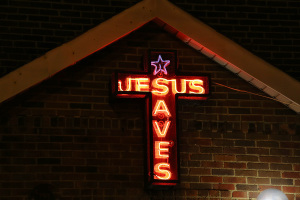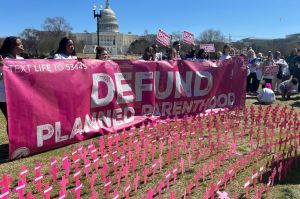Survey: Non-Religious Americans on the Rise in Every State
The percentage of people who claim no religion has nearly doubled since 1990. Meanwhile, the percentage of Christians is on the decline, according to a new study on American religious life.
The 2008 American Religious Identification Survey (ARIS), released on Monday, shows that the percentage of Americans claiming no religion, which jumped from 8.2 percent in 1990 to 14.2 in 2001, has now increased to 15 percent.
The findings were based on over 54,000 interviews conducted between February and November of last year. The 2008 survey was a continuation of ARIS surveys in 1990 and 2001, which are part of a landmark series by the Program on Public Values at Trinity College in Hartford, Conn.
The survey was conducted by Barry Kosmin and Ariela Keysar, director and associate director, respectively, of Trinity's Institute for the Study of Secularism in Society and Culture.
Additionally, the survey found that the non-religious population, or "Nones," has shifted away from the Pacific Northwest to Northern New England.
Vermont has become the least religious state in the country with 34 percent of "Nones," leading all other states by 9 percentage points. Between 1990 and 2008, the Green Mountain State had the largest percentage increase of non-religious people (21 percent), beating out New Hampshire (20 percent), Delaware (16 percent) and Massachusetts (14 percent).
"Many people thought our 2001 finding was an anomaly," Keysar said. "We now know it wasn't. The 'Nones' are the only group to have grown in every state of the Union."
Despite a small proportion (1.6 percent) of Americans calling themselves atheist or agnostic, a review of stated beliefs shows that 12 percent are deistic (believe in a higher power but not a personal God), and 12 percent are atheist (no God) or agnostic (unsure).
Over the past seven years, the number of outright atheists has nearly doubled, from 900,000 to 1.6 million, according to the survey.
Meanwhile, the percentage of Christians in America has declined from 76.7 in 2001 to 76 percent, down from 86.2 percent in the 1990s. The shrinking proportion of Christians is largely attributed to the decline in the non-Catholic segment of the Christian population, largely from the mainline denominations, including Methodist, Lutheran, Presbyterian, and Episcopalian/Anglican churches, and the United Church of Christ.
But other segments of the Christian population, including those who identify themselves as "Christian," "Evangelical/Born Again," or "non-denominational Christian," are on the rise.
Non-denominational Christians, associated with the growth of megachurches, has dramatically jumped from an estimated 200,000 in 1990 to 2.5 million in 2001 and to over 8 million today. This group now accounts for 11.8 percent of the U.S. population today compared to only 5 percent 18 years ago.
Another trend indicated in the survey is the shifting of mainline Protestants to evangelicalism. The data shows that 38.6 percent of mainline Protestants now also identify themselves as evangelical or born again.
"It looks like the two-party system of American Protestantism — mainline versus evangelical — is collapsing," commented Mark Silk, director of the Public Values Program. "A generic form of evangelicalism is emerging as the normative form of non-Catholic Christianity in the United States."
Baptists, which constitute the largest population within the non-Catholic Christian tradition, have increased their numbers by two million since 2001, but continue to decline as a proportion of the population, the survey also shows.
The 2008 ARIS study reveals that the Catholic population in the country has shifted away from the Northeast and towards the Southwest, with Texas (9 percent), California (8 percent) and Arizona (5 percent) posting the biggest percentage gains since 1990.
Kosmin cited "immigration and natural increase among Latinos" as reasons for the shift.
The 2008 ARIS survey was based on interviews of adults in the 48 contiguous states and carries a margin of error of less than 0.5 percent. Funding for the study was provided by Lilly Endowment, Inc. and the Posen Foundation.





























